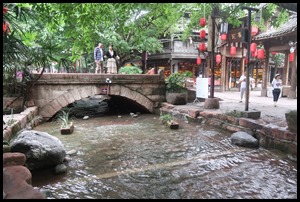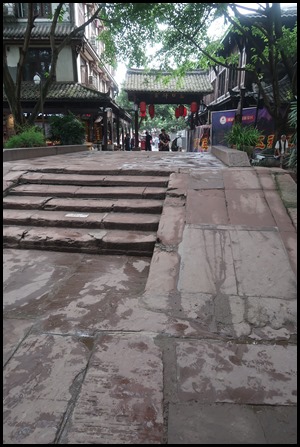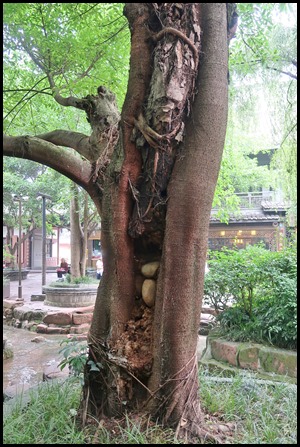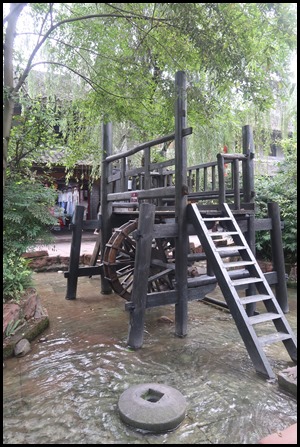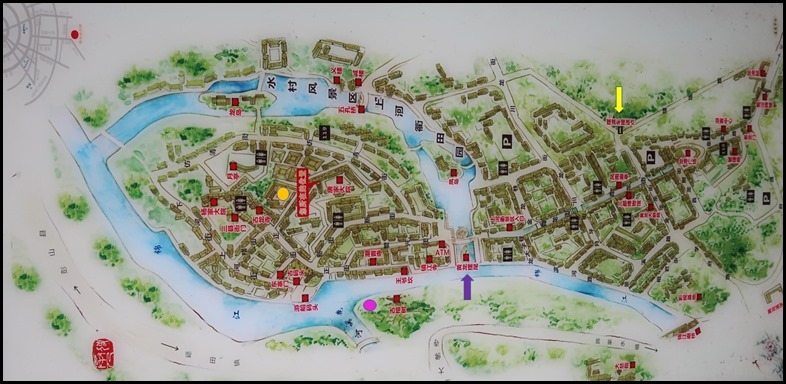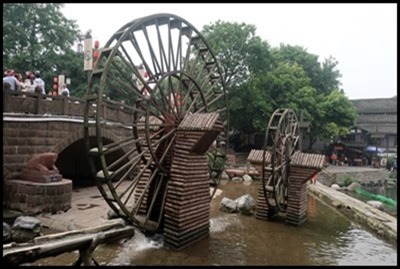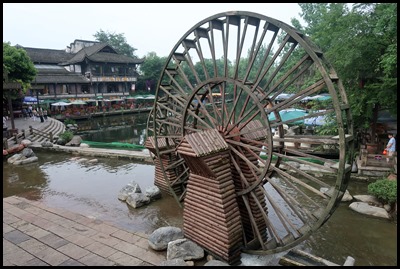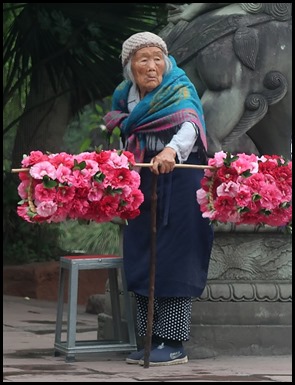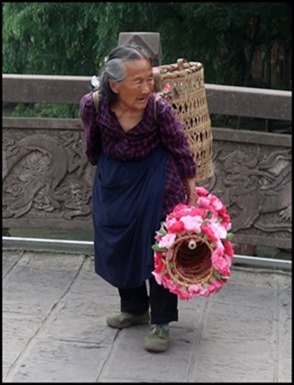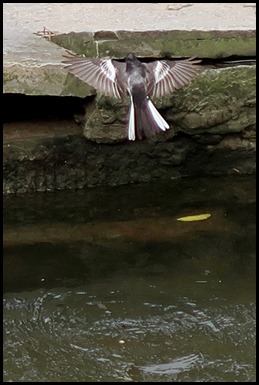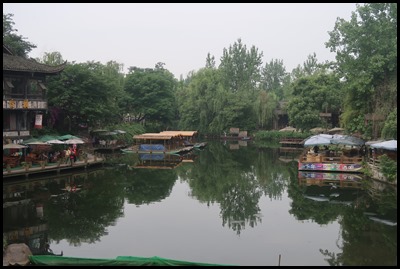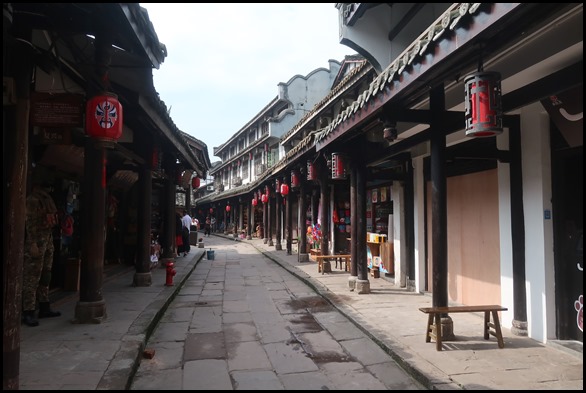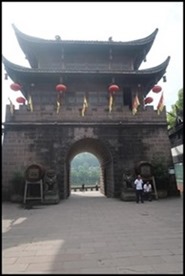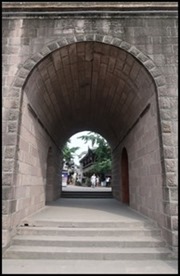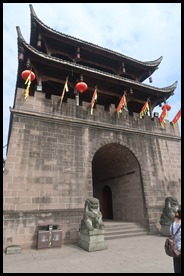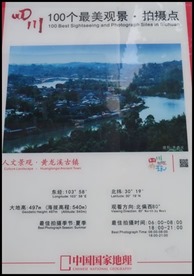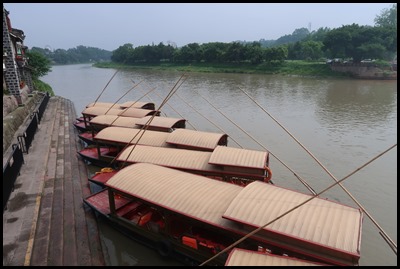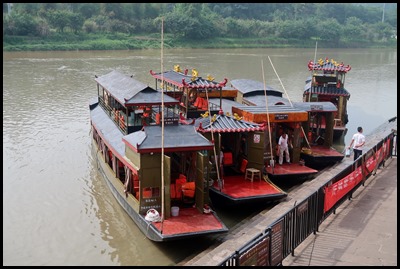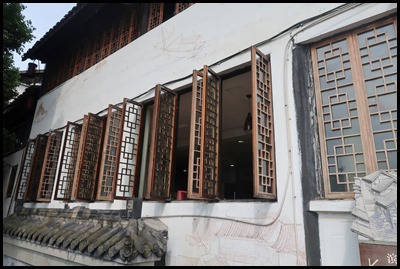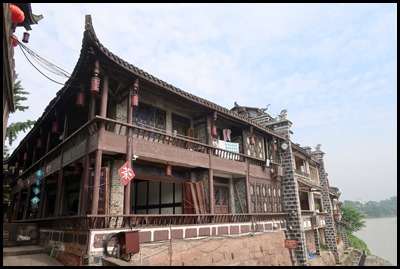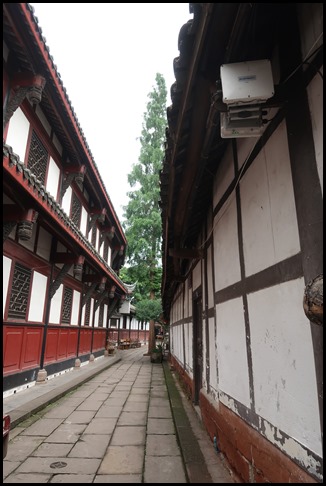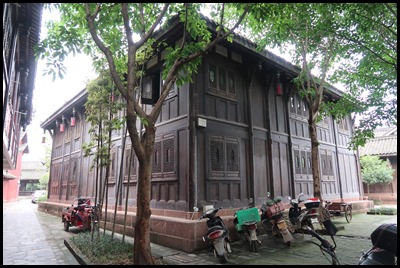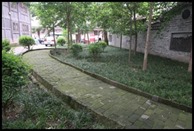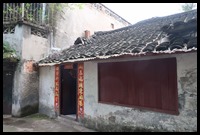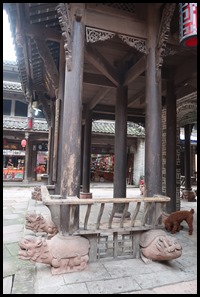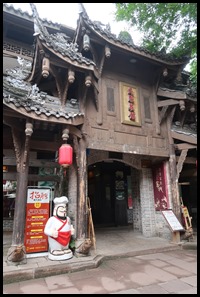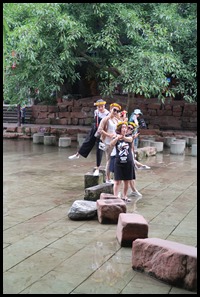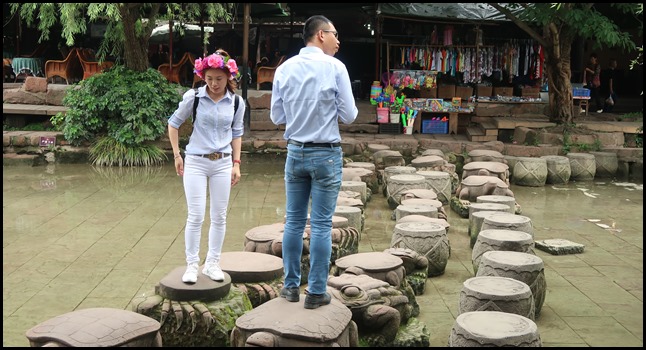Huanglongxi Bimble

|
The Ancient Town of Huanglongxi
  The Ancient Town of
Huanglongxi has over seventeen hundred years of history. A picturesque little
town that still retains rustic charm, ancient
buildings and plenty of folklore. One of Top 10 riverside ancient towns in
China, it was also a place of strategic historical importance, silkworm
production and export, and where two major rivers
join.
Huanglongxi Ancient Town features water, Buddhist temples, tea shops, colourful embroidery, silk screen printing, a varied cooking culture and food in all shapes and sizes – some quite perverse (food blog). Huanglongxi Ancient town still keeps the planning style and layouts as it was in Qing Dynasty which is made up of seven streets and nine alleyways. Seventy-six Western Sichuan style houses are scattered throughout the town along with six banyan trees said to be over a thousand years old. There are many legends about these trees, the most famous is about Zhuge Liang. It is said that Zhuge Liang found the soil on the river bank was soft when he visited Huanglongxi town and as such, the town was at risk of collapsing. He dreamt of an elderly man who told him he needed to plant a tree from the mountain nearby. Luckily, Zhuge Liang found a suitable big banyan tree in that area and saved Huanglongxi from collapse. The town’s people named the tree after him. Time to bimble.
No sooner than we had left the main road, than we were in a pretty town, stream running through the middle of the two rows of shops on a wide, tree lined avenue – beyond the second row, the Huanglong River which joins the Xiang.
Later, we were to find a town map. We entered the town via the yellow arrow and headed for the water wheel at the purple arrow. The pink circle marks the most famous of the ancient banyan trees and that stands on the opposite side of the river to where we stood admiring the Eastern Town Gate, just along to the left we found the ridge leading up to the temple, Water Carrying Alley and the pawn shop. After walking beside the river we cut in to the orange circle marking the Buddhist Temple with the opera stage, walked through Fish Alley (by the big red box of Chinese characters the top of which is by Tang’s Compound). We zig-zagged through all the streets and alleys, re-crossed by the water wheels to enjoy a sit down with a lemon tea, then headed back to the yellow arrow. A lovely way to spend a few hours with no pushing, shoving, lack of umbrellas being used as weapons and huge crowds which made for a smashing change.
At the end of our first ‘avenue’ we stood by the water wheels, a feature of the town, then went to the bridge to see the biggest wheel from the other direction.
At the bridge we met to adorable young ladies selling flower tiaras (a local tradition to wear) and watched a little bird about his ablutions.
To our left (as we stood on the bridge) a shallow area with stepping stones that gets crowded at the weekends with children playing and paddling. To our right, tour boats and each side many eateries.
We then took Fuxing Street, lined with lanterns decorated with a famous opera mask, famous to the area.
We diverted left at the Eastern Town Gate. Huanglongxi Old Town began to build stockade gates during the reign of the Kaiming Kingdom in Sichuan. A stockade gate is a traditional defensive and landscaping structure of the old town. The Eastern Town Gate inherits some features of the Western Town Gate of the Qing Dynasty. On the red sandstone pedestal built by the river, bulky red sandstone slabs are piled up into a thick and compact wall. In the middle is a gateway formed by arched slabs. The second and third floors have double-eaved roof and gable and hip roof with wooden doors and windows exquisitely carved components, green tiles, molded ridge, upturned eaves and tilted corners. Closely neighbouring the “millennium water dock”, the Eastern Town Gate is also known as the water gateway of the old town. As we stood to the left of the gate on the river side we saw a framed picture telling us that the aerial view of this area features in the “100 Best Engineering and Photography Sites in China”.
Looking left and right by the river.
Looking further across the river to our right, the oldest and most famous of the ancient banyan trees, while it stands the town will stay safe.
To the left and right of the Eastern Gate were some gorgeous old buildings.
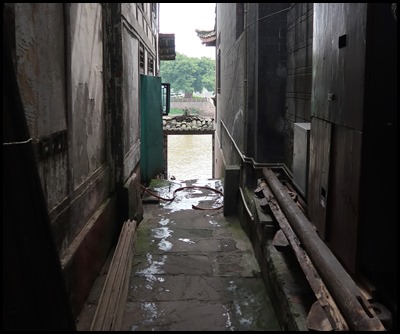  Water
Carrying Alley. In the Republic of China,
Huanglongxi still had a “clear” and pure water supply. Each morning residents
went through this red-sandstone paved alley to carry water from the Fuhe River
to their family vats for the whole day’s use, hence Carrying Water Alley.
Huanglongxi used to be a commercial center and water gathering business was
booming. Restaurants needed a lot of water for their operation. A water carrying
service rose to meet the need. Water Carrier Tian and Water Carrier Deng were
the two most famous figures to ply their
trade.
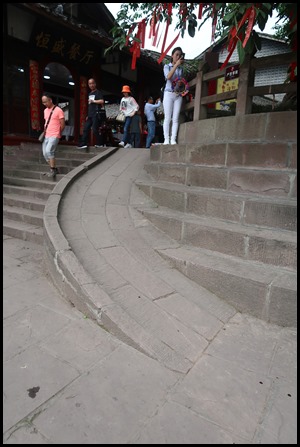 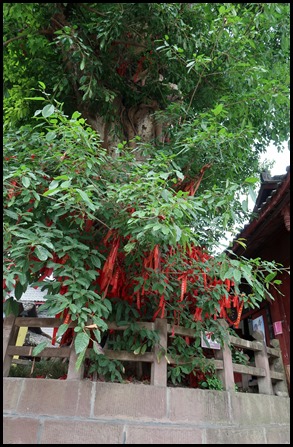 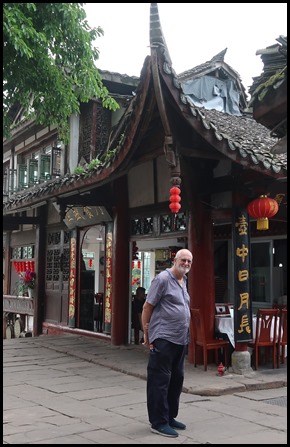 Up the slope, past another of the ancient banyan trees, in to a Buddhist temple, a nunnery,
passed the pawn shop and Bear led the way to Water
Carrying Alley on the left.
Fish Alley. Huanglongxi people live by the water and love to eat fish, especially the “cat’s fish”. Also known today as One thousand-a-kilo Fish, it has long been a top delicacy of the old town. According to Grass and Wood by Ye Ziqi, a writer living in late Yuan Dynasty and early Ming Dynasty “There is a small fish in Wuyang. One thousand of them weighs one kilo.” In the past, local fishermen sold the fish to local residents and businessmen. A market gradually took shape and Fish Alley got its name from the market.
Fish Alley took us through to Tang’s Compound. Tang’s Compound has been around for over three centuries. It is now a protected cultural relic of Chengdu City. Tang’s was a a Hakka family migrated to Sichuan during the campaign of “filling Sichuan with people from Hunan, Hubei, Guangxi and Guangdong” in early Qing Dynasty. In the town-building process, the three families, Tang’s He’s and Qiao’s, made huge investment to have a new compound built on the west bank of the Fuhe River (the location of present-day old town). Later, Tang’s began its brewing business and gradually developed into the most famous brewery in Huanglongxi Town. Existing buildings of the compound occupy a land area of about three mu. They form an 8-shaped architectural pattern with two patios, the front serving as the shop premise while the rear as the family domain. Such pattern is known as the “Courtyard”. The compound, with green tiles and carved doors and windows, is a seven-pillar wooden structure joined together with mortices and tenons, the typical civilian house style in West Sichuan.
The Moon and the Big
Dipper represents the reunion and mutually enhanced glory. In traditional
Chinese architecture, buildings in this pattern have the best geometric layout.
This tourist attraction highlights traditional compounds such as the Tang’s
Compounds and Yang’s Compound. On the half-moon-shaped land stand several functional courtyards named Bamboo Manor, Green Tongue,
Five-flavor Residence, Rainbow Hall, and Ten-onion Garden. They form a space
pattern of the Big Dipper, with the Moon Pavilion nestling in the middle. The
Moon in the Big Dipper is born on the land of
man.
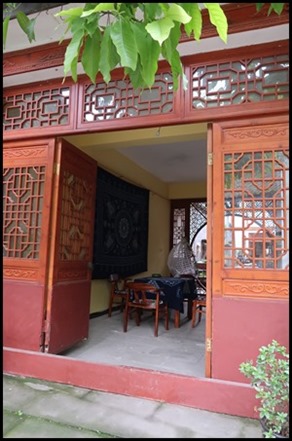  
Back to the main town streets we decided it was time for a cup of tea.
We made our way back through the alleys to the stepping stones by the bridge and enjoyed watching the ‘selfie queens’ pose.
Thrilled one of the stepping stones (the one the young lady is standing on) is a crab. We made our way to the rattan chairs on the far side and settled to await our glass of lemon tea. We had to be very, very firm with the swarms of women and a couple of men who wanted to massage, use big tweezer-looking-implements on our ears, get us to the feet nibbling fish and any manner of other availabilities......
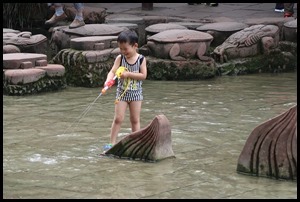  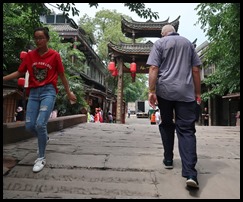
We enjoyed watching a little chap playing with his new water pistol complete with backpack water tank. Walking back along the first avenue we had bimbled, but this time, on the other side of the stream, we saw four adult turtles in a tank no wider or deeper than eight feet. Neither of us wanted to investigate in case we didn’t like the reason. So none-the-wiser we headed out of this gem of a little town.
ALL IN ALL VERY PICTURESQUE BEAUTIFUL, QUAINT AND ORIGINAL TOWN |
